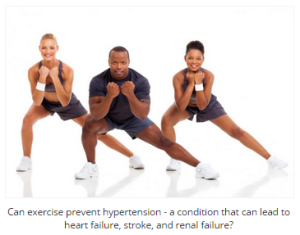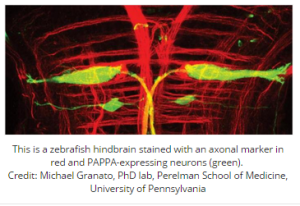
While being physically fit is beneficial in and of itself, researchers now report that people with high levels of fitness are less likely to develop high blood pressure – also referred to as hypertension – a risk factor for cardiovascular disease.
The study, published in the Journal of the American Heart Association, examined the association of fitness with hypertension among participants undergoing treadmill stress tests to rule out ischemia as a cause of chest pain or shortness of breath.
“If you’re exercising and you’re fit, your chances of developing hypertension are much less than someone else who has the same characteristics but isn’t fit,” says Dr. Mouaz H. Al-Mallah, senior author of the study.
Normal blood pressure is below 120/80 mm Hg – the first number (systolic measurement) represents peak pressure in the arteries and the second number (diastolic measurement) represents minimum pressure in the arteries. Blood pressure is considered to be high when it is greater than 140/90 mm Hg.
There are two types of hypertension. While secondary hypertension appears suddenly and is caused by underlying conditions such as kidney or thyroid problems, primary hypertension has no identifiable cause and develops gradually over the course of many years.
In the US, hypertension affects 1 in 3 adults. According to the American Heart Association (AHA), 78 million people in the country have been diagnosed with the condition.
“Hypertension is associated with a lot of other illnesses and adds significantly to health care costs,” explains Dr. Al-Mallah, “so we need to know how we can reduce it.”
Measuring physical fitness and high blood pressure
The researchers assessed 57,284 participants from the Henry Ford Exercise Testing (FIT) Project, from 1991-2009, taking treadmill stress tests. Of these, 35,175 participants had a history of hypertension.
The team measured the physical fitness of the participants by estimating how much oxygen their bodies used per kg ofbody weight per minute, and thus how much energy they burned in metabolic equivalents (METs).
With 1 MET representing the amount of energy expended by the body at rest, a large number of METs reflects a high-intensity workout.
The researchers observed that participants whose most intense exercise was less than 6 METs had more than a 70% likelihood of having hypertension at the start of the study. Conversely, participants whose maximal exercise output was 12 METs were less than 50% likely to have hypertension.
During the stress test, participants who managed to reach 12 METs or more were 20% less likely to develop hypertension compared with participants who reached less than 6 METs.
A total of 8,053 new cases of hypertension were reported in participants’ medical records and administrative claims during the study’s follow-up period. Of these new cases, 49% were among participants with the lowest fitness (less than 6 METs), and only 21% were among participants with the highest fitness (more than 12 METs).
Fitness: a ‘strong predictor’ of hypertension
Although the study uses a large and diverse population sample, the participants were all originally referred for a stress test, indicating that their initial cardiovascular disease risk would be greater than that of the general population, potentially hindering the generalizability of the findings. The study was also limited by a lack of measuring incidental hypertension in a clinical setting.
Dr. Al-Mallah states that further study is required in order to determine how increasing and decreasing fitness levels affect the risk of hypertension over time. Physical activity was not formally assessed in the study, and this could be addressed in future research as well.
Hypertension is a major risk factor for cardiovascular disease, the number one cause of premature mortality in the developed world. High levels of exercise have been associated with protecting the body from certain health conditions, and now this study suggests adding hypertension to the list.
“Fitness is a strong predictor of who develops hypertension and who does not,” says Dr. Al-Mallah. “This is a clear message to everyone: patients, physicians and lawmakers. It’s very important to be fit.”
Medical News Today also recently reported on a study suggesting that sugars may contribute more to hypertension risk than salt.
Written by James McIntosh
http://www.medicalnewstoday.com/articles/287109.php
 Implications for understanding underlying molecular genetics of human neuropsychiatric disorders, according to Penn study
Implications for understanding underlying molecular genetics of human neuropsychiatric disorders, according to Penn study







